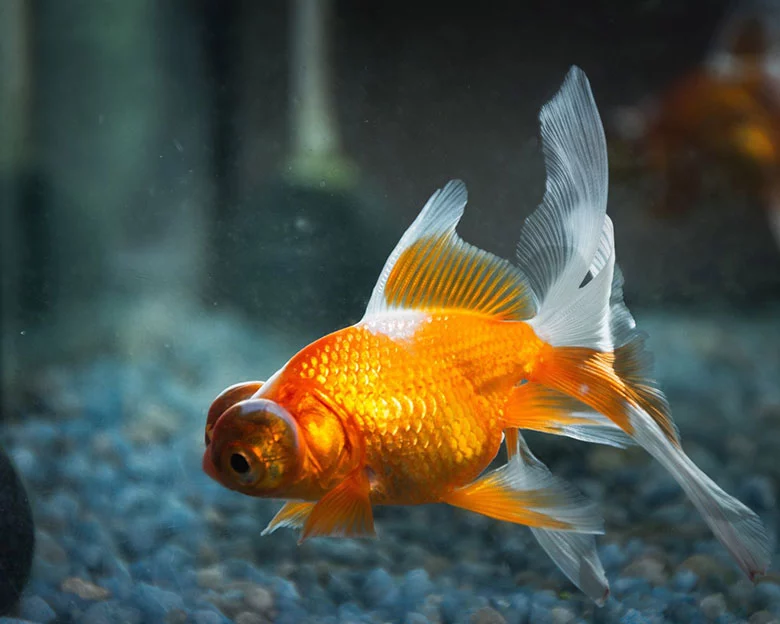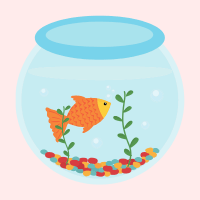Are you concerned about the black spots that have appeared on your goldfish? As a pet owner, it’s natural to want to ensure the health and wellbeing of your beloved fish. Black spots on goldfish can be a cause for concern, but it’s important to understand that there are various reasons why they may appear.
In this article, we will delve into the causes of black spots on goldfish and how to prevent and treat them. Genetics, disease, and environmental factors can all play a role in the appearance of black spots on goldfish. It’s essential to have a good understanding of these factors to ensure the health of your fish.
Additionally, we will discuss the signs of a dying goldfish and the importance of good hygiene and proper feeding to prevent health issues. By the end of this article, you will have a comprehensive understanding of black spots on goldfish and how to keep your fish healthy and happy.
Key Takeaways
- Black spots on goldfish can be caused by genetics, disease, or environmental factors.
- Good hygiene, proper feeding, and regular water changes are important for goldfish care and can help prevent illness.
- Signs of illness in goldfish include rapid breathing, lying at the base of the tank, or erratic swimming.
- To prevent illness, regularly clean the tank and filter, provide a balanced diet, and monitor water quality. Seeking veterinary help early on can also prevent illness from worsening.
Goldfish Care Tips
To keep your goldfish healthy and happy, you should practice good hygiene, feed them properly, and make sure to regularly change their water.
Proper aquarium setup is important, so make sure that your tank is the right size for your fish and that it has the proper filtration system to keep the water clean. Goldfish produce a lot of waste, so it’s important to remove any uneaten food, debris, and waste from the tank on a regular basis.
In addition to maintaining a clean tank, it’s important to monitor the water quality. Goldfish require a specific pH level and temperature range to thrive, so make sure to test the water regularly and make any necessary adjustments.
If the water quality is poor, it can lead to stress and illness in your fish. By following these simple care tips, you can help prevent health issues and keep your goldfish happy and healthy for years to come.
Signs of Illness

If your goldfish is experiencing rapid breathing, lying at the base of the tank, or erratic swimming, those may be signs of illness. Other symptoms of a sick goldfish include rubbing against surfaces, torn or folded fins, lack of appetite, milky white patches, ragged appearance, protruding eyes, pale gills, or bloating.
It’s important to recognize these symptoms early on and seek veterinary help to prevent the illness from worsening. When seeking veterinary help, be prepared to provide information about your goldfish’s environment, feeding habits, and any recent changes in behavior or appearance.
The veterinarian may perform tests to determine the cause of the illness and recommend a treatment plan. To prevent illness in the future, maintain good hygiene by regularly cleaning the tank and filter, provide proper feeding with a balanced diet, and regularly change the water.
By being attentive to your goldfish’s health and seeking veterinary help when necessary, you can ensure that your pet remains healthy and happy.
Benefits of Owning Goldfish
Owning a goldfish can bring beauty and joy to your home as they make pleasant pets. They not only add color to your aquarium decoration but also have a calming effect on their owners.
Goldfish are relatively easy to care for and have a hardy nature, making them a popular choice for beginners and experts alike. Moreover, goldfish have been bred for centuries, resulting in hundreds or even thousands of species.
Breeding techniques have resulted in genetic changes that can cause color changes in goldfish, making them even more interesting to own. With their adaptability and ability to blend into their environment, goldfish are a great addition to any household.
Frequently Asked Questions
How Long Do Goldfish Typically Live?
Goldfish typically have a life expectancy of 10-15 years, but can live up to 20 years with proper care. Their growth rate depends on factors such as water temperature, diet, and genetics.
Can Goldfish Live In A Bowl Or Do They Need A Tank?
Goldfish can technically live in a bowl, but it’s not recommended. The Bowl vs tank debate centers around maintaining water quality in a goldfish bowl. A tank with a filter is best for optimal health and longevity. Pros and cons of each option should be considered.
Can Goldfish Recognize Their Owners?
Yes, goldfish can recognize their owners through sight, sound, and smell. This recognition can lead to the development of a pet-owner bond, making them more responsive and interactive with their owner.
What Is The Ideal Temperature For Goldfish Water?
To keep your goldfish healthy, maintain a water temperature between 65-75°F. Use filtration systems to remove waste, ammonia, and excess food. Water temperature control and filtration systems are crucial for preventing illness and promoting a long, happy life for your goldfish.
Can Goldfish Be Kept With Other Fish Species?
When considering fish compatibility, tank size is crucial. Goldfish can be kept with other fish of similar size and temperament, but require a large tank due to their size and waste production. Proper research and planning is key for a successful tank community.

